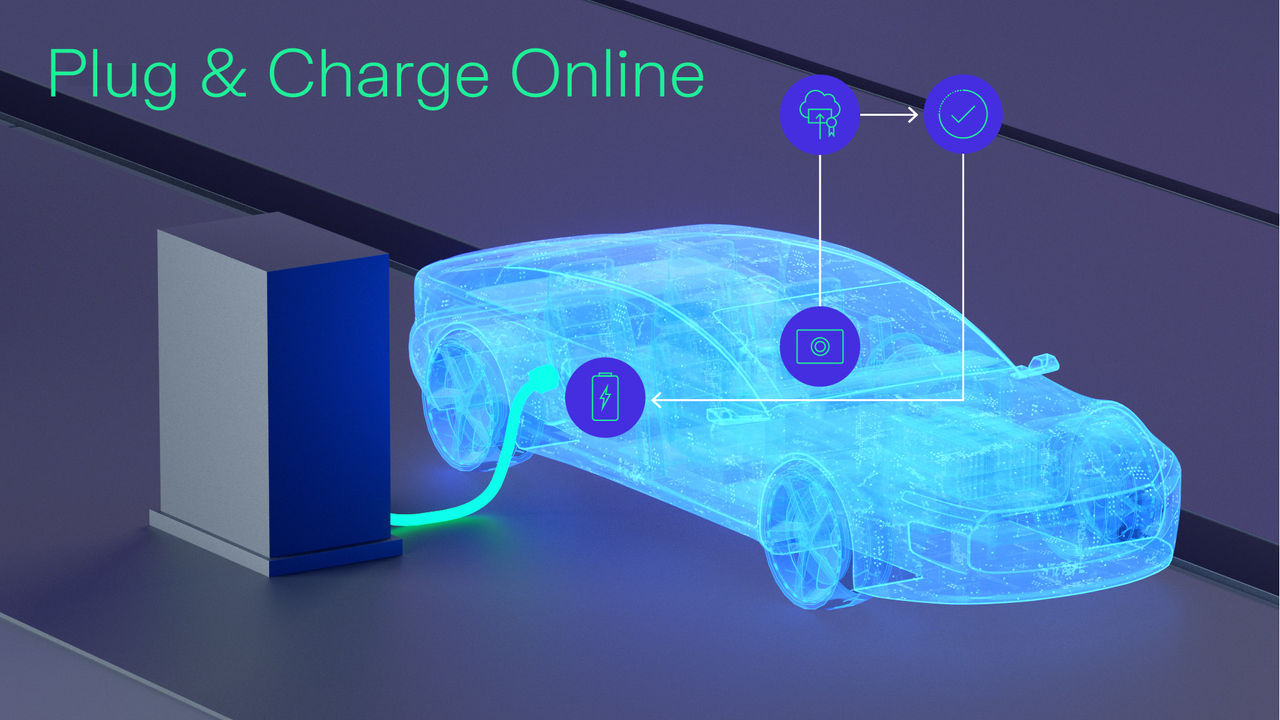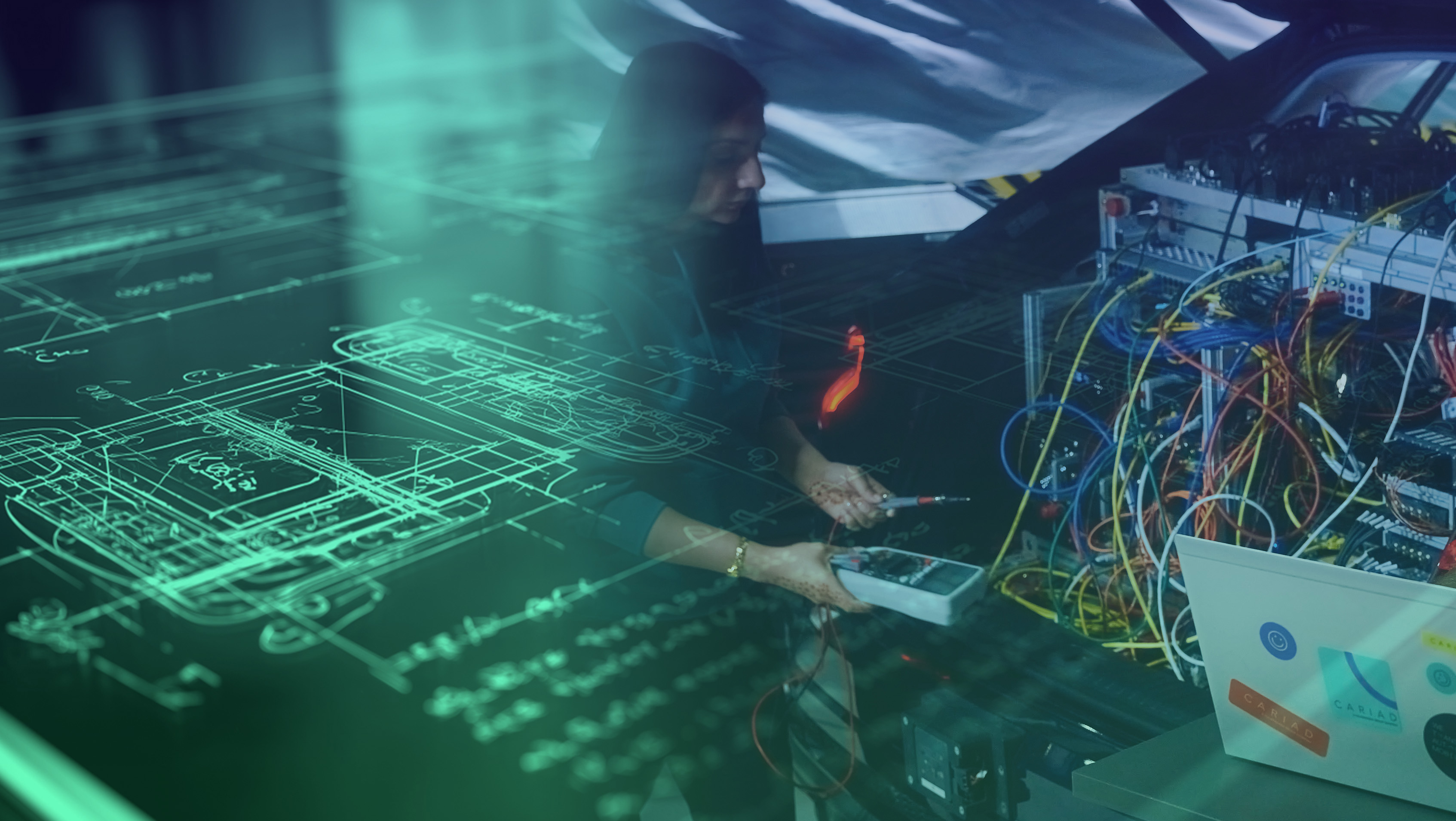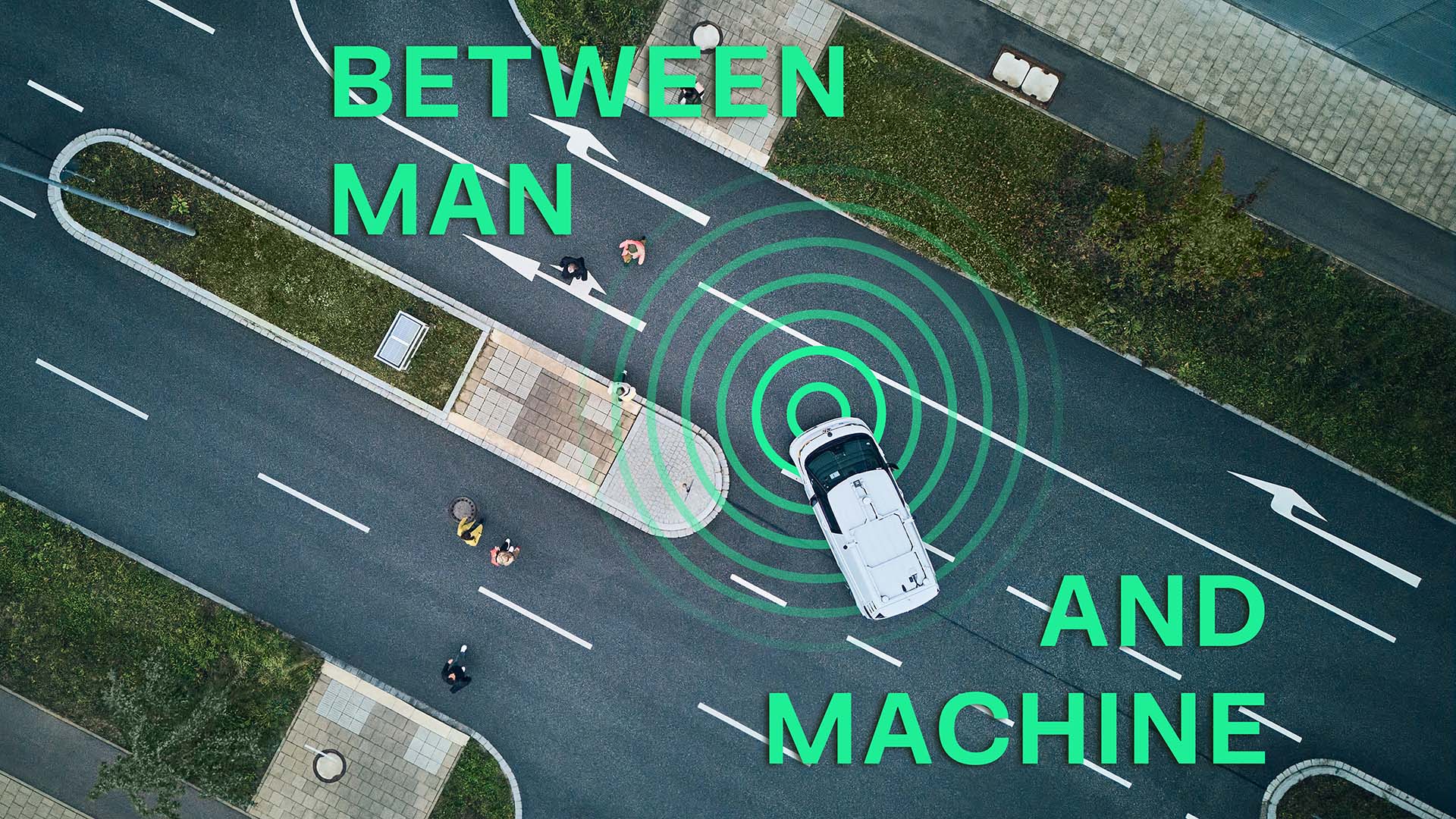Plug & Charge: When charging is easier than refueling
CARIAD is developing a whole spectrum of functions for vehicles built on the Volkswagen Group’s volume software platform, making the driving experience safer, sustainable and more comfortable. In this article, we look at Plug & Charge, which greatly simplifies the charging process.
 With a certificate stored in the vehicle via the We Connect ID. app, the vehicle itself becomes a digital charging card.
With a certificate stored in the vehicle via the We Connect ID. app, the vehicle itself becomes a digital charging card.
What is Plug & Charge?
Plug & Charge is a software function that allows for convenient charging, making the process even easier than refueling for internal combustion vehicles.
As soon as the driver plugs in the charging cable from the charging station, the vehicle starts an authentication process within seconds and identifies itself independently at the charging station. The charging station then uses a secure backend to check, anonymously or pseudonymously, whether the corresponding individualized certificate (OEM provisioning certificate) is in the car. The whole process involves encrypted communication in accordance with ISO 15118 – an international standard based on digital certificates in a public key infrastructure, agreed upon by car manufacturers, charging pole operators and infrastructure providers. The charging station then reports the amount of electricity charged to the mobility service provider (MSP) via the backend, and the MSP then charges the customer on the basis of the contract terms stored in the certificate.
Plug & Charge is available as standard in the Volkswagen ID. Buzz, ID. 5 and ID. 5 GTX.
What are the advantages of Plug & Charge?
The previous need for an RFID charging card or apps to be able to charge the car will no longer apply in the future. Instead, a certificate can be stored in the vehicle via the We Connect ID. app, turning the vehicle itself into a digital charging card. At the same time, Plug & Charge can be expected to reduce interruptions in the charging process compared to a manual connection, as the process is programmed in such a way to maintain communication.
By encrypting the communication over different levels (backends such as CBS and IdentityKit, as well as Hubject, MSP and the charging station operator) and according to the ISO 15118 security standard, data security is much higher than with AutoCharge or charging cards. The data required for communication is stored on the InCar Application Server for the modular electric drive matrix (MEB) and on the High Computing Platform 5 for the Premium Platform Electric.
The new function, which will be available for all brands and all future vehicles, also offers Volkswagen customers the option of a closed Volkswagen ecosystem – if, for example, you opt for the Group's own MSP from the provider Elli, which has over 250,000 charging points in Europe. This way, you have the complete end-to-end chain comfortably covered. It is, however, still possible to use other providers.
What are the challenges for Plug & Charge?
Even if the result is the simplification of a complex process, the challenges remain complex from a software perspective. All information about the vehicle certificate and signed contracts must be accessible to everyone involved in the charging process and, at the same time, sensitive data must be protected at all costs. This results in complex communication that must be ensured via different backends with extensive encryption.
Equally, the certificate is not only installed exclusively, but must also be verified and activated accordingly. The communication involves the forwarding of many individual queries ranging from power levels to contract details. All steps of this complex process were reviewed internally and approved by the open-source office and IT security. In addition, the complex end-to-end process was reviewed and penetration testing carried out.
Are there enough Plug & Charge-capable charging stations?
Plug & Charge capability is easily recognizable via a logo on the charging station. This applies to many rapid charging stations and therefore also includes almost all Ionity stations. Today, there are already at least 460 charging locations with around 3,250 charging points where Plug & Charge is available.




